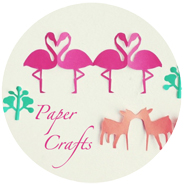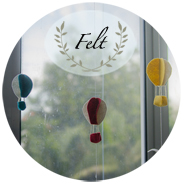Actually, I don’t have the answer to that. Somehow, in these recent weeks K started asking for vegetables on his own accord, without any attempt on my part to offer him any.
I started introducing him veggies when he started on solids; through carrots, brocolli and spinach. He has no problems with sweet veggies like carrots, but forget about anything that is green, leafy and comes with a stalk. Even when I try to disguise the veggies and hide it in the dishes or rice, his taste buds have this ability to pick them out. He spits it out, then vomits whatever else he swallowed before. After that, I just stopped cooking any green leafy veggies for K’s meals.
Since K now eats almost what our family eats during mealtime, he has a penchant for green leafy veggies and will always ask for the ‘veg-table’ to be placed in his bowl.
Some things that I have realised when it comes to getting a toddler to eat. If a certain food is refused, don’t make a battle over it and try to offer it at another meal, in my case, I gave up after a while.
I managed not to turn K off from veggies when I did not make any further attempts to nag or force if he did not want to take a bite. I just thought that I should let nature take its course. Maybe it helps when K sits on his high chair at the family table during meal time. That way, he is encouraged to eat vegetables when he sees us eating them.
I suppose being a positive role model for your child also helps when it comes to food. K also enjoys eating all kinds of fruits, since I am a fruit-lover. And I make sure that dh hides in the room when he eats his junk food, as potato chips and sweets are forbidden food for K.
To see K eating his veggies is almost akin to milestones such as, when he first crawled or flipped over. Dh gets equally thrilled when he sees K relishes every bit of veggie given to him during his meals. He had to take this video when he saw how K happily “shovelled the greens into his mouth.”
Excuse me, while I gloat in this ‘veggie milestone’, although, I am hoping this is not just one of those healthy “food jags”.




















Hi, I realized my boy vomits out all things I gave to him when there is a “not so soft” vegie inside his food, such as the stalk or mushroom.
I tried giving him only the mushroom and telling him this is the mushroom, he thus recognize it and therefore willing to take it.
Perhaps you can try doing so as well, I do not gurantee that it works all the time, but just one of my experience.
Hi there, im currently studying early childhood at ngee ann poly(: i came across your blog a mth back and i found it really interesting. i implemented the ‘bbq’ theme you mentioned in one of yr posts in my childcare centre and the children loved it!
Im studying how world hunger and povery affects me as a early childhood educator. Im thinking of implementing activities for the 3-4yr olds, but am not sure what activities are appropriate. May i have some advice on how i can help them understand better?(:
Shuey – K is the opposite. He usually likes food with texture. Totally dislike it when it is soft or mushy. I had a hard time feeding him porridge after he turned 1 year old.
Anonymous – Can I know in what context? For what subject is this research done? Maybe the question should be answered as how it increase your social consciousness as a childhood educator.
If you know the Selman’s stages of perspective taking; children from the ages of 3- 6 years old display traits of undifferentiated perspective taking. They recognize that the self and others can have different thoughts and feelings, but they frequently confuse the two. Very young children don’t understand that other people have different feelings and experiences from their own.
U may want to consider implementing this for children from K2 onwards. I am not certain that this will work, but u can try doing this –
1. Bibliotherapy – use of books to help children relate to the subject matter
2. I will not recommend play stations, as children cannot display behaviours which they have not experience or seen. Instead, show visuals or real life comparisons of the subject matter when they experiencing their daily routine; meal times, playing with their toys etc.
3. Do craft, create handmade toys with natural items
In general, focus on the theme of scarcity and unfufilment of daily needs, which is something I believe Singapore children in general find it hard to relate to.